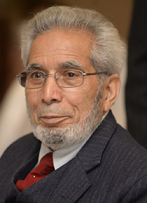A Bumpy Post–Pandemic Transition
By Saghir A. Aslam
Rawalpindi, Pakistan

(The following information is provided solely to educate the Muslim community about investing and financial planning. It is hoped that the Ummah will benefit from this effort through greater financial empowerment, enabling the community to live in security and dignity and fulfill their religious and moral obligations towards charitable activities).
(This article has been written in collaboration with Walt Hommerding senior vice president investment of Wells Fargo.)
Most important points
A mild recession is now our base case for the end of 2022 and into early 2023. As inflation and monetary tightening ease more perceptibly later in 2023, we expect a nascent economic recovery that the market may project into 2024.
We are sharing with you work we believe at this time however; this is all going to depend on the rate of implantation and all other items that help run this economy make sure that you stay in touch with your professional investment advisor and you will have to continue to make changes in your investment according to the conditions that will come.
We expect the US macroeconomic and interest rate advantages to push the dollar higher against developed market currencies.
Emerging market currencies may find more support but are unlikely to broadly outperform the dollar.
What it may mean for investors
A more challenging economic environment calls for a more defensive stance within and across asset classes, in our view.
We believe that this economic expansion will rank among the shortest and most volatile cycles over the past century. After only two years, we see clear signs that the expansion is in late cycle, thanks to an inflation accelerant that we accept to fade more noticeably in 2023, We believe that rising US interest rate, inflation’s squeeze on real incomes, supply chain disruptions from China’s lockdown, and the war in Ukraine increasingly will outweigh support from solid job growth and erode consumer spending in the balance of 2022. US recession risk has risen steadily and is starting to cross over a probability level that makes recession a base case for the end of 2022 and into early 2023. As inflation and monetary tightening ease more perceptibly later in 2023, we expect the beginning of an economic recovery that markets may project into 2024.
By comparison with the US, most of the rest of the world economy faces greater vulnerability to energy and other supply shocks, and to slowing 2022 growth in export markets — particularly, a sharp slowdown because of the COVID-19 lockdowns in China. These, plus the dollar's surge in value, have stirred up considerable 2022 headwinds for commodity importers and strongly suggest a coming European recession, likely through mid-2023, Some emerging economies are commodity producers, and we anticipate their tailwind from higher export prices should provide enough offset so that overall emerging market economic growth stays positive, albeit historically slow. By late-2023, we expect economies outside the US should pick up their pace modestly if Europe and the US return to growth.
(Saghir A. Aslam only explains strategies and formulas that he has been using. He is merelyproviding information, and NO ADVICE is given. Mr Aslam does not endorse or recommend any broker, brokerage firm, or any investment at all, nor does he suggest that anyone will earn a profit when or if they purchase stocks, bonds or any other investments. All stocks or investment vehicles mentioned are for illustrative purposes only. Mr Aslam is not an attorney, accountant, real estate broker, stockbroker, investment advisor, or certified financial planner. Mr Aslam does not have anything for sale.)

